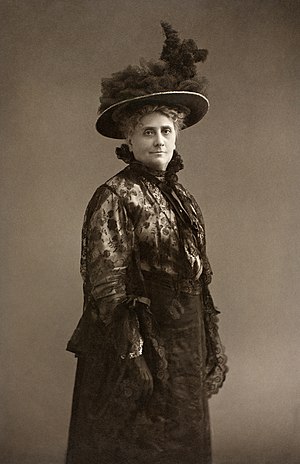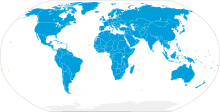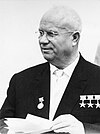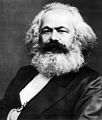Portal:Politics
- Alemannisch
- العربية
- বাংলা
- Български
- Bosanski
- Čeština
- Deutsch
- Eesti
- Español
- Esperanto
- Français
- हिन्दी
- Bahasa Indonesia
- Italiano
- Magyar
- Македонски
- مصرى
- Bahasa Melayu
- Nederlands
- 日本語
- Norsk nynorsk
- Occitan
- Олык марий
- Oʻzbekcha / ўзбекча
- Polski
- Português
- Română
- Runa Simi
- Русский
- Sicilianu
- සිංහල
- Slovenčina
- Soomaaliga
- کوردی
- Suomi
- தமிழ்
- Татарча / tatarça
- ไทย
- Türkçe
- اردو
- West-Vlams
- 粵語
- Zazaki
- 中文
Portal maintenance status: (June 2018)
automated editing software. Learn how to update the maintenance information here . |
| Main | Topics and categories | Tasks and projects |
The Politics portal
It may be used positively in the context of a "political solution" which is compromising and non-violent, or descriptively as "the art or science of government", but also often carries a negative connotation. The concept has been defined in various ways, and different approaches have fundamentally differing views on whether it should be used extensively or in a limited way, empirically or normatively, and on whether conflict or co-operation is more essential to it.
A variety of methods are deployed in politics, which include promoting one's own political views among people,
In modern
A political system is a framework which defines acceptable political methods within a society. The history of political thought can be traced back to early antiquity, with seminal works such as Plato's Republic, Aristotle's Politics, Confucius's political manuscripts and Chanakya's Arthashastra. (Full article...)
Selected article
The
Featured picture

| Credit: Photograph credit: Eivind Enger; restored by Adam Cuerden |
Gina Krog (20 June 1847 – 14 April 1916) was a Norwegian suffragist, teacher, liberal politician, writer and editor. She played a central role in the Norwegian women's movement from the 1880s until her death, notably as a leading campaigner for women's right to vote. In 1884, Krog co-founded the Norwegian Association for Women's Rights with liberal MP Hagbart Berner. Over the next two decades, Krog co-founded the Women's Voting Association, the National Association for Women's Suffrage, and the Norwegian National Women's Council, spearheading the presentation of women's suffrage proposals to the Storting (the Norwegian parliament). She was an early member of the Liberal Party and served as a deputy member of its national board.
 Featured lists - load new batch
Featured lists - load new batch
-
Image 1President of the Government, with the exception of the 25-day premiership of Mathias Mongenast. Before 1857, the prime minister was the President of the Council. In addition to these titles, the prime minister uses the title Minister of State, although this is usually relegated to a secondary title. (Full article...)Image 2state legislature to become chartered as a city. There are no unincorporated areas in the county, since all territory in Pennsylvania is incorporated.)
The 52 incorporated municipalities in Lycoming County are the subject of the first list, which gives their names and etymologies, dates settled and incorporated, what they were formed from, area, population, and location within the county. Two other lists dealing with former parts of Lycoming County are included. The second list is of former incorporated townships and gives the same information as above on their current status. The third list gives information on the eighteen other Pennsylvania counties which were formed from or contain land originally in the county. (Full article...Image 3
The member states of the United Nations comprise 193 sovereign states. The United Nations (UN) is the world's largest intergovernmental organization. All members have equal representation in the UN General Assembly.
The Charter of the United Nations defines the rules for admission of member states. Membership is open to all peace-loving states which accept certain terms of the charter and are able to carry them out. New members must be recommended by the United Nations Security Council. In addition to the member states, the UN also invites non-member states to be observer states at the UN General Assembly. A member state that has persistently violated the principles of the United Nations Charter can be expelled from the United Nations. (Full article...)Image 4Full article...)Image 5The U.S. state of Alabama has 67 counties. Each county serves as the local level of government within its borders. The land enclosed by the present state borders was joined to the United States of America gradually. Following the American Revolutionary War, West Florida was ceded to Spain by treaty while the remainder was organized primarily as the Mississippi Territory, and later the Alabama Territory. The territorial assembly established some of the earliest county divisions that have survived to the present, including the earliest county formation, that of Washington County, created on June 4, 1800. In 1814, the Treaty of Fort Jackson opened the territory to American settlers, which in turn led to a more rapid rate of county creation. Alabama was admitted to the Union as the 22nd state in 1819. The Alabama state legislature formed additional counties from former native lands as the Indian Removal Act took effect and settlers populated different areas of Alabama. In 1820, Alabama had 29 counties. By 1830 there were 36 and Native Americans still occupied large areas of land in northeast and far western Alabama. By 1840, 49 counties had been created; 52 by 1850; 65 by 1870; and the present 67 counties by 1903. Houston County was the last county created in the state, on February 9, 1903.
According to 2023 U. S. Census data, the average population of Alabama's 67 counties is 76,246, with Jefferson County as the most populous (662,895), and Greene County (7,341) the least. The average land area is 756 sq mi (1,958 km2). The largest county is Baldwin (1,590 sq mi, 4,118 km2) and the smallest is Etowah (535 sq mi, 1,386 km2). The Constitution of Alabama requires that any new county in Alabama cover at least 600 square miles (1,600 km2) in area, effectively limiting the creation of new counties in the state. (Full article...)Image 6
The General Secretary of the Central Committee of the Communist Party of the Soviet Union was the leader of the Communist Party of the Soviet Union (CPSU). From 1924 until the country's dissolution in 1991, the officeholder was the recognized leader of the Soviet Union. Prior to Stalin's accession, the position was not viewed as an important role in Lenin's government and previous occupants had been responsible for technical rather than political decisions.
Officially, the General Secretary solely controlled the Communist Party directly. However, since the party had a monopoly on political power, the General Secretary de facto had executive control of the Soviet government. Because of the office's ability to direct both the foreign and domestic policies of the state and preeminence over the Soviet Communist Party, it was the de facto highest office of the Soviet Union. (Full article...)Image 7Full article...)Image 8
The governor of Delaware (known as the president of Delaware from 1776 to 1792) is the head of government of Delaware and the commander-in-chief of the state's military forces. The governor has a duty to enforce state laws, and the power to either approve or veto bills passed by the Delaware Legislature, to convene the legislature, and to grant pardons, except in cases of impeachment, and only with the recommendation of the Board of Pardons.
There have been 71 people who have served as governor, over 74 distinct terms. Three (Joseph Haslet, Charles Polk Jr. and Elbert N. Carvel) served non-consecutive terms. Additionally, Henry Molleston was elected, but died before he could take office. Only four governors have been elected to two consecutive terms, with the longest-serving being Ruth Ann Minner, who was elected twice after succeeding to the office, serving a total of just over eight years. The shortest term is that of Dale E. Wolf, who served 18 days following his predecessor's resignation; David P. Buckson served 19 days under similar circumstances. The current governor is Democrat John Carney, who took office on January 17, 2017. (Full article...)Image 9reform movements in Britain gained strength, the American colonists successfully rebelled, and the French Revolution erupted. Wollstonecraft experienced only the headiest of these days, not living to see the end of the democratic revolution when Napoleon crowned himself emperor. Although Britain was still revelling in its mid-century imperial conquests and its triumph in the Seven Years' War, it was the French revolution that defined Wollstonecraft's generation. As poet Robert Southey later wrote: "few persons but those who have lived in it can conceive or comprehend what the memory of the French Revolution was, nor what a visionary world seemed to open upon those who were just entering it. Old things seemed passing away, and nothing was dreamt of but the regeneration of the human race.")
Part of what made reform possible in Britain in the second half of the eighteenth century was the dramatic increase in publishing; books, periodicals, and pamphlets became much more widely available than they had been just a few decades earlier. This increase in available printed material helped facilitate the rise of the British middle class. Reacting against what they viewed as aristocratic decadence, the new professional middle classes (made prosperous through British manufacturing and trade), offered their own ethical code: reason, meritocracy, self-reliance, religious toleration, free inquiry, free enterprise, and hard work. They set these values against what they perceived as the superstition and unreason of the poor and the prejudices, censorship, and self-indulgence of the rich. They also helped establish what has come to be called the "cult of domesticity", which solidified gender roles for men and women. This new vision of society rested on the writings of Scottish Enlightenment philosophers such as Adam Smith, who had developed a theory of social progress founded on sympathy and sensibility. A partial critique of the rationalist Enlightenment, these theories promoted a combination of reason and feeling that enabled women to enter the public sphere because of their keen moral sense. Wollstonecraft's writings stand at the nexus of all of these changes. Her educational works, such as her children's book Original Stories from Real Life (1788), helped inculcate middle-class values, and her two Vindications, A Vindication of the Rights of Men (1790) and A Vindication of the Rights of Woman (1792), argue for the value of an educated, rational populace, specifically one that includes women. In her two novels, Mary: A Fiction and Maria: or, The Wrongs of Woman, she explores the ramifications of sensibility for women. (Full article...Image 10Pakistan Parliament. (Full article...)Image 11Davidson Township with 78.2 square miles (203 km2). Cherry Township has the highest population of any municipality (1,705 or 26.5% of the county total as of 2010), while the borough of Eagles Mere has the lowest population (120 or 1.9%). (Full article...)Image 12Thestate's constitution, the governor was prohibited from succeeding himself or herself in office, though four men (Isaac Shelby, John L. Helm, James B. McCreary and Happy Chandler) served multiple non-consecutive terms. Paul E. Patton, the first Kentucky governor eligible for a second consecutive term under the amendment, won his reelection bid in 1999. James Garrard succeeded himself in 1800, before the constitutional provision existed. Garrard is also the longest serving governor, serving for a total period of eight years and 90 days. In 2023 Democrat Andy Beshear became the 3rd incumbent governor in Kentucky history to be reelected to a second consecutive term. (Full article...)Image 13
This article lists the heads of state of the Central African Republic. There have been seven heads of state of the Central African Republic and the Central African Empire since independence was obtained from the French on 13 August 1960. This list includes not only those persons who were sworn into office as President of the Central African Republic but also those who served as de facto heads of state.
Jean-Bédel Bokassa served as a de facto head of state (and also reigned as Emperor from 1976 to 1979), while David Dacko (who served as de facto head of state from 1979 to 1981), André Kolingba, Ange-Félix Patassé, and François Bozizé were elected into office at some point during their tenure. To date, Kolingba is the only former head of state of the Central African Republic to voluntarily step down from the office through a democratic process, following the 1993 general election. (Full article...)Image 14There are 21surrogate (responsible for uncontested and routine probate), all of which are elected officials. Counties organized under the Optional County Charter Law may also have an elected county executive. Counties traditionally perform state-mandated duties such as the maintenance of jails, parks, and certain roads. The site of a county's administration and courts is called the county seat. (Full article...)Image 15Maritime provinces (New Brunswick, Nova Scotia and Prince Edward Island), and the Western provinces (Alberta, British Columbia, Manitoba and Saskatchewan). The seats for Newfoundland and Labrador (6), the Northwest Territories (1), Yukon (1), and Nunavut (1) are assigned apart from these regional divisions. The province of Quebec has 24 Senate divisions that are constitutionally mandated. In all other provinces, a Senate division is strictly an optional designation of the senator's own choosing, and has no real constitutional or legal standing. A senator who does not choose a special senate division is considered a senator for the province at large. (Full article...)Selected quote
In other countries there is no need for each of thefeudal division of the country, those landlord or bourgeois groupings or parties which have guns have power, and those which have more guns have more power. Placed in such an environment, the party of the proletariatshould see clearly to the heart of the matter.revolutionary war; that is good, not bad, it is Marxist. The guns of the Russian Communist Party created socialism. We shall create a democratic republic. Experience in the class struggle in the era of imperialismteaches us that it is only by the power of the gun that the working class and the labouring masses can defeat the armed bourgeoisie and landlords; in this sense we may say that only with guns can the whole world be transformed. We are advocates of the abolition of war, we do not want war; but war can only be abolished through war, and in order to get rid of the gun it is necessary to take up the gun.— Mao Zedong, Problems of war and strategy, 1938Selected biography
Secret Speech", vilifying Stalin and ushering in a less repressive era in the Soviet Union. Hoping eventually to rely on missiles for national defense, Khrushchev ordered major cuts in conventional forces. Despite the cuts, Khrushchev's rule saw the tensest years of the Cold War, culminating in the Cuban Missile Crisis.Did you know (auto-generated) - load new batch

- ... that a Chinese corruption investigation into Gao Yan has been interpreted as a political move against Li Peng, then second-in-command of the Communist Party of China?
- ... that before she was elected to the Parliament of Armenia, Maria Karapetyan spray-painted political graffiti on the streets of Yerevan in support of Nikol Pashinyan?
- ... that the London Forum, a British far-right organization, was described by an anti-fascist magazine as "[bridging] the fascist and Tory right"?
- ... that What Hath God Wrought, the 2007 history of Jacksonian America written by Daniel Walker Howe, is dedicated to Andrew Jackson's "political nemesis" John Quincy Adams?
- ... that the only purpose of the Delaware Straight-Out Truth Teller was to promote a political candidate?
- ... that the 2009 book Where Heaven and Earth Meet introduced the term "Sacred Esplanade" as a politically neutral term for the religious site in Jerusalem known as al-Haram al-Sharif or the Temple Mount?
More did you know...
- ...that the Voting Rights Act of 1965 banned literacy tests as a voting qualification in the U.S.?
- ...that Matt Taibbi's book Griftopia has been described as a "necessary ... corrective" to the assertion that bubbles are an inevitable part of the market economy?
- ...that in the book Net.wars, author Wendy M. Grossman attributes Internet conflict in the 1990s to culture shock from an influx of users?
- ...that former California Assembly Republican Leader and California Republican Party Chair Robert W. Naylor was editor of The Stanford Daily while he was a student at Stanford University?
- ...that depending on a time and place, the same social movement may be revolutionary or not?
- ...that Roman embassies to China are reported in Chinese historical accounts from as early as 166?
In this month
- Islamic Republic by a 98% vote, overthrowing the Shahofficially.
- April 9, 1948 – the period known as La Violencia begins with the assassination of Colombian Liberal Party leader Jorge Eliécer Gaitán. For the next ten years Liberals, Communists and Conservatives would fight each other in the conflict.
- April 9, 2003 – Government of Saddam Hussein overthrown by American forces in Iraq.
- Han Myung-sook becomes South Korea's first female Prime Minister.
- Faure Gnassingbe to power two months after he was installed by the military following the death of his father, Gnassingbé Eyadéma.
- April 28, 1937 – Saddam Hussein, the President of Iraq was born.
- April 30, 1945 – Adolf Hitler and his wife Eva Braun, commit suicide as the Red Army approached the Führerbunker in Berlin. Karl Dönitz succeeds Hitler as President of Germany; Joseph Goebbels succeeds Hitler as Chancellor of Germany.
News and Current events
Wikinews on Politics and conflicts- August 11: 4 local government areas in New South Wales, Australia locked down after COVID-19 case
- August 11: Australia: AstraZeneca vaccine access expanded by Victorian government
- August 1: Australia: Victorian lockdown lifted
- July 29: Tunisia's president dismisses prime minister, suspends parliament
- July 25: Australia: Wikinews interviews Reg Kidd, mayor of the City of Orange, about COVID-19 lockdown and local government
- July 23: South Australia enters week-long lockdown to contain COVID-19 Delta variant spread
- July 21: Technological University Dublin senior lecturer Dr Lorcan Sirr speaks to Wikinews on housing market in Ireland
- July 21: Three rural councils in New South Wales, Australia enter 7-day lockdown
- July 21: Australia: Victoria lockdown extended by a week with 85 active cases recorded
- July 15: California governor signs new state budget, eligible Californians to get stimulus payments
Topics and categories
See the portal's Topics and categories page for a comprehensive overview.
General images
The following are images from various politics-related articles on Wikipedia.-
Image 1A world map distinguishing countries of the world as federations (green) from unitary states (blue), a work of political science (from Political science)
-
Image 2Elizabeth Warren and Bernie Sanders campaigning for extended US Medicare coverage in 2017. (from Health politics)
-
Image 3Savka Dabčević-Kučar, Croatian Spring participant; Europe's first female prime minister (from Civil and political rights)
-
Image 4The logo and slogan for change.org (from Politics and technology)
-
Image 5Detail from Corrupt Legislation (1896) by Elihu Vedder. Library of Congress Thomas Jefferson Building, Washington, D.C. (from Political corruption)
-
Image 6Candlelight protest against South Korean President Park Geun-hye in Seoul, South Korea, 7 January 2017 (from Political corruption)
-
Image 7Ferdinand Marcos (pictured with his daughter Imee) was a Philippine dictator and kleptocrat. His regime was infamous for its corruption. (from Political corruption)
-
Image 8This is the divide of the different political parties in Estonia where in the 2013 elections, over 133,000 people (roughly 21.2% of participating voters) voted over the Internet. The 2013 elections were also the first elections to allow vote verification with mobile devices. (from Politics and technology)
-
Image 9Eugène Delacroix's Liberty Leading the People (1830, Louvre), a painting created at a time where old and modern political philosophies came into violent conflict. (from History of political thought)
-
Image 10World map with the concepts of Heartland and Rimland applied (from Geopolitics)
-
Image 11Montenegro's president Milo Đukanović is often described as having strong links to Montenegrin mafia. (from Political corruption)
-
Image 12Protesters in support of American whistleblower Edward Snowden, Berlin, Germany, 30 August 2014 (from Political corruption)
-
Image 13US Military Police officer restraining and sedating prisoner, while a soldier holds him down (from Political corruption)
-
Image 14The sixth president of the United States, John Quincy Adams' "corrupt bargain" of 1824 is an example of patronage. (from Political corruption)
-
Image 15A memorial to the Great Famine (Ireland), a famine event in Ireland that faced elongated suffering from the UK's domestic policy failures at the time under the Prime Ministers Sir Robert Peel and Lord John Russell. (from Health politics)
-
Image 16Russia handing over the symbolic relay baton for the hosting rights of the 2022 FIFA World Cup to Qatar in June 2018 (from Political corruption)
-
Image 17Blockchain technology has created cryptocurrencies similarly to voting tokens seen in blockchain voting platforms, with recognizable names including Bitcoin and Ethereum. (from Politics and technology)
-
Image 18Reformers like the American Joseph Keppler depicted the Senate as controlled by the giant moneybags, who represented the nation's financial trusts and monopolies. (from Political corruption)
-
Image 19Countries with politicians, public officials or close associates implicated in the Panama Papers leak on April 15, 2016 (from Political corruption)
-
Image 20Karl Marx and his theory of Communism, developed with Friedrich Engels, proved to be one of the most influential political ideologies of the 20th century. (from History of political thought)
-
Image 21TheCivic Center, San Francisco, California. The UN is one of the key organizations in the process of the political globalization. (from Political globalization)
-
Image 22American lobbyist and businessman Jack Abramoff was at the center of an extensive corruption investigation. (from Political corruption)
-
Image 23United Nations Convention against Corruption (from Political corruption)
-
Image 24Malaysia's former Prime Minister Najib Razak was found guilty in the corruption trial over the multi-billion-dollar 1MDB scandal. He is currently serving his sentence in Kajang Prison. (from Political corruption)
-
Image 25Sir Halford Mackinder's Heartland concept showing the situation of the "pivot area" established in theTheory of the Heartland. He later revised it to mark Northern Eurasia as a pivot while keeping area marked above as Heartland. (from Geopolitics)
-
Image 26Division of the world according to Haushofer's Pan-Regions Doctrine (from Geopolitics)
-
Image 27A map depicting Corruption Perceptions Index in the world in 2022; a higher score indicates lower levels of perceived corruption.100 – 9089 – 8079 – 7069 – 6059 – 5049 – 4039 – 3029 – 2019 – 109 – 0No data(from Political corruption)
Related portals
Associated Wikimedia
The following Wikimedia Foundation sister projects provide more on this subject:
-
Commons
Free media repository -
Wikibooks
Free textbooks and manuals -
Wikidata
Free knowledge base -
Wikinews
Free-content news -
Wikiquote
Collection of quotations -
Wikisource
Free-content library -
Wikiversity
Free learning tools -
Wiktionary
Dictionary and thesaurus
Sources
More portals
Discover Wikipedia using portals






















































